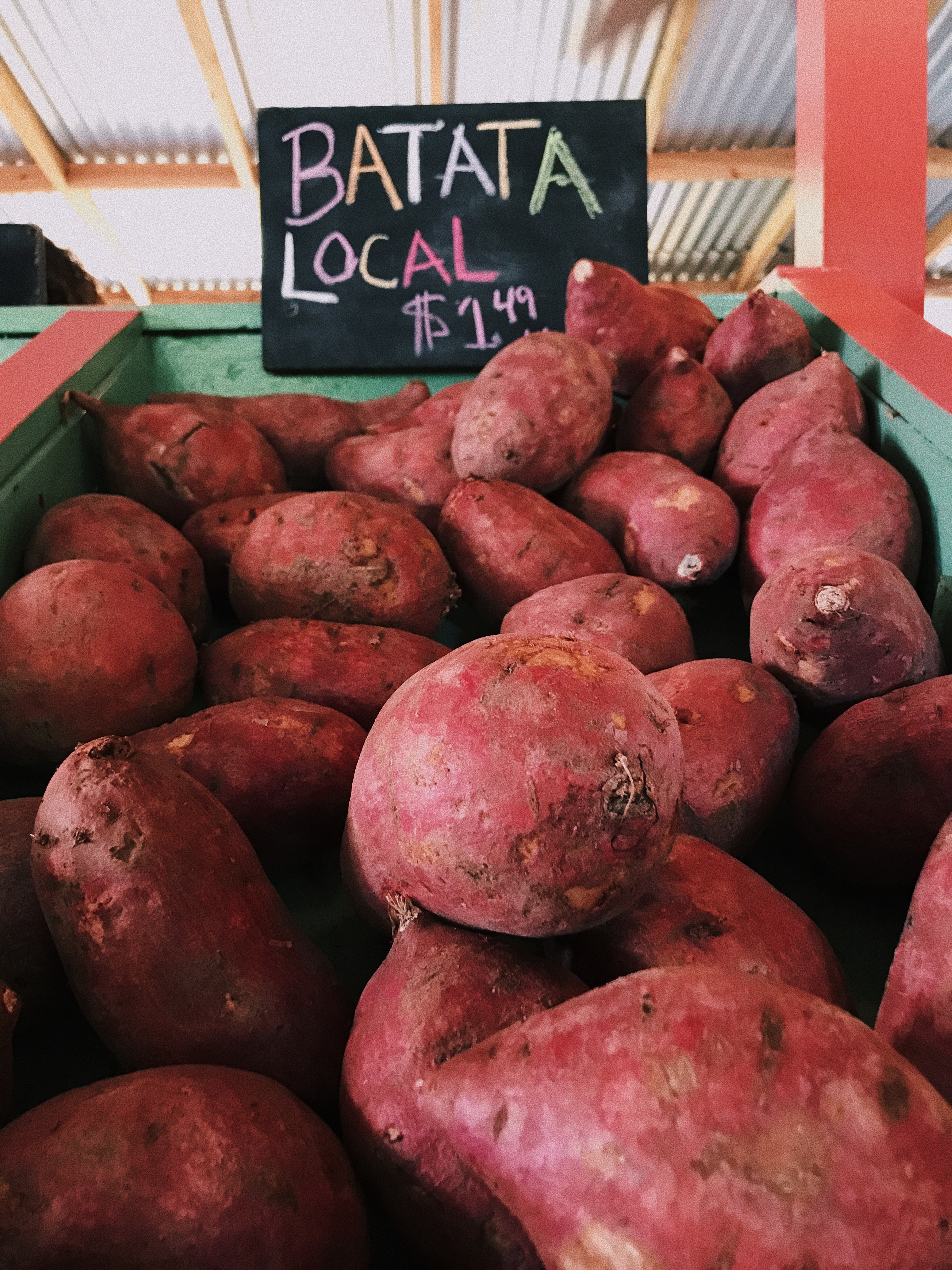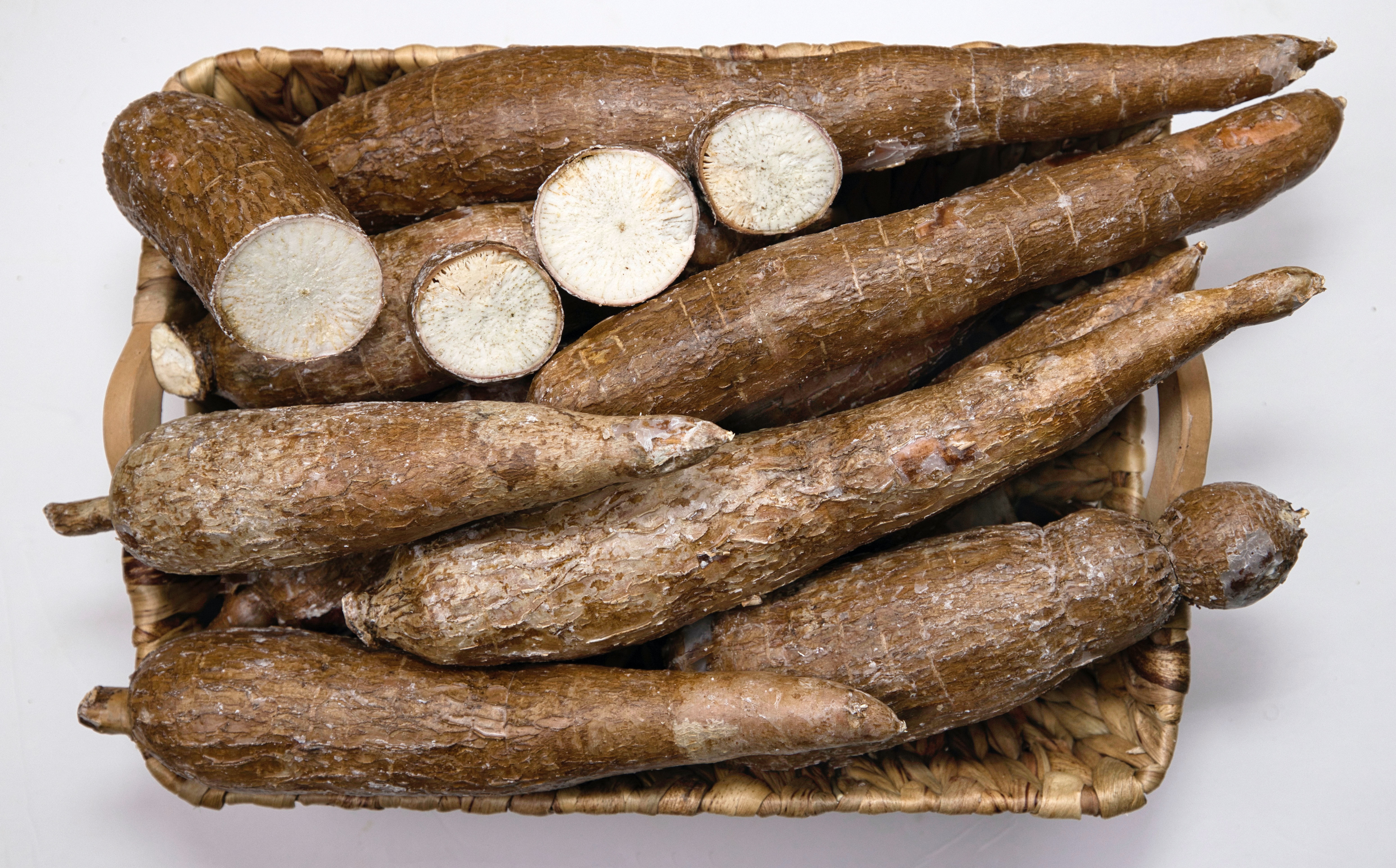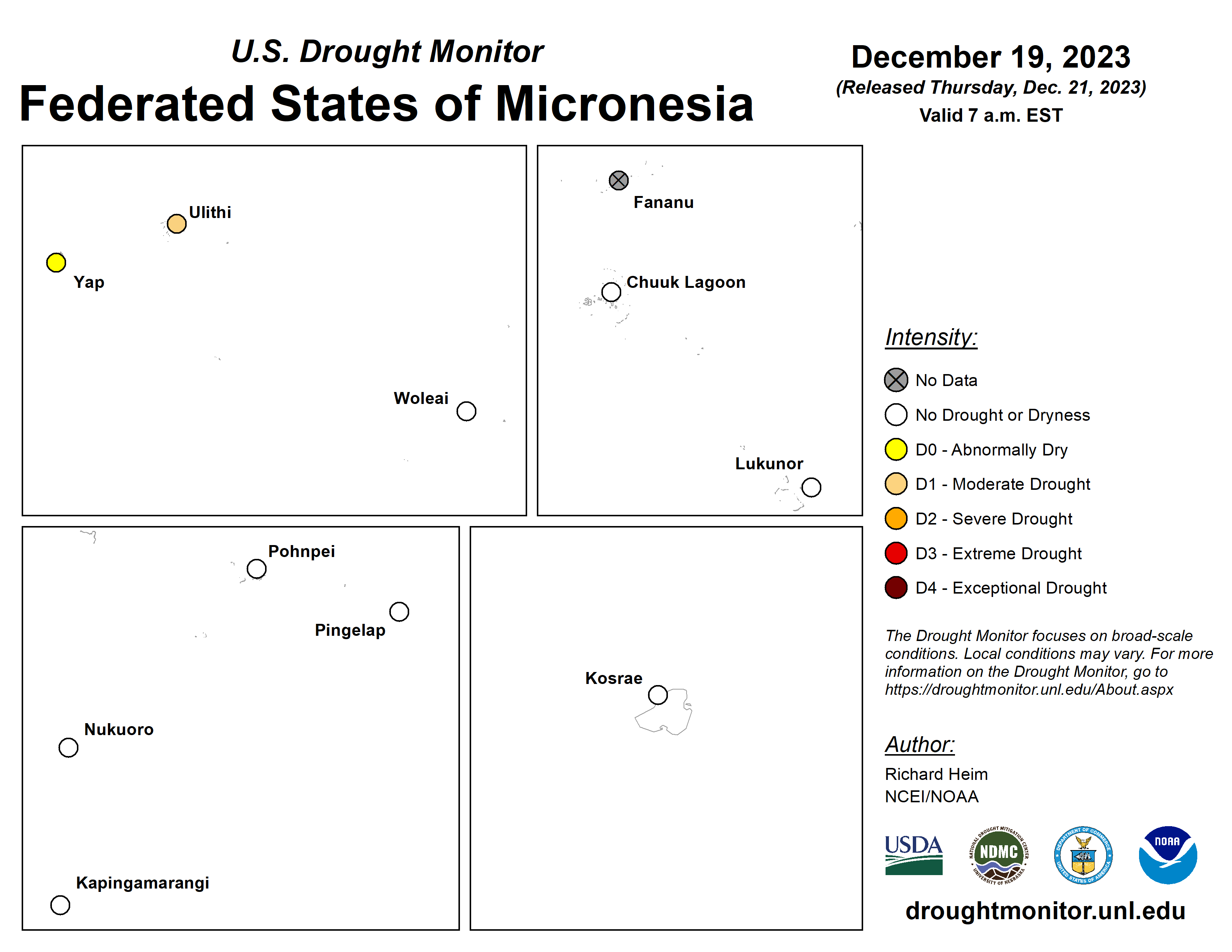What is El Nino?
(Spanish for 'the Christ Child') refers to a warming of the ocean surface, or above-average sea surface temperatures, in the central and eastern tropical Pacific Ocean.
It is referred to as “The Christ Child” because this climate phenomenon takes place during December and peaks and declines throughout the beginning of the following year.
El Nino in the Federated States of Micronesia
According to the statement produced from the WMO RA-V Pacific Regional Climate Centre Network following the 13 Pacific Islands Climate Outlook Forum (PICOF-13t)
- El Niño is expected to continue through at least March 2024, peaking in December 2023 or January 2024, likely as a strong event.
- Significant amount of rainfall begins in the early stages of El Nino
- Because of differences in the ocean-atmosphere system, climatic and oceanic
impacts from the 2023-24 El Niño event are unlikely to match those of the 2015-16
and 1997-98 very strong El Niño events. - Because of the increase in human-induced climate warming, we can expect different in heat record and different patterns than the previous years.
- El Niño Southern Oscillation (ENSO): This is what scientists call the ups and downs of El Niño and La Niña across the Pacific. ENSO causes changes to rainfall, air and ocean temperatures,Tropical Cyclone risk, trade-winds, and sea levels.
What can FSM farming households do to prepare?
-
Water Storage - Water is an essential resource in every society and to prepare for potential drought, farmers and communities should store extra water in tanks or containers for cooking and drinking.
-
Cultivating drought-resilient crops - Farmers should focus on planting or managing drought-resistant crops. Some drought resistant crops that have been identified throughout the Pacific are some varieties of sweet potatoes, Casava and tannia.



-
Crop preservation technique - Applying any local technique for processing and preserving crops can ensure food security throughout an event of a drought.
-
Stay informed - Contact the FSM Department of Environment Climate Change and Emergency Managment or your local weather service station and public safety offices to stay informed. You can also seek advice from your state agriculture department for more information and resource regarding farming during this event.
Additional Resources:
- January 2024 Micronesia ENSO Update Prepared by: WFO Guam Released: Tuesday, January 9, 2024
Who to Contact?
FSM Department of Environment Climate Change and Emergency Management
Palikir Station, Pohnpei State, FM 96941
Phone: (691) 320-8815
Pohnpei & Kosrae Weather Service Office
| Address: |
P.O. Box 69
Pohnpei, FSM, 96941-0069
|
|---|---|
| Phone: | (011)(691) 320-2248 |
| Fax: | (011)(691) 320-5787 |
| Recorded Forecast: | (011)(691) 320-5788 (Currently Unavailable) - English (011)(691) 320-6161 (Currently Unavailable) - Pohnpei |
Chuuk Weather Service Office
| Address: |
P.O. Box A
Chuuk, FSM, 96942
|
|---|---|
| Phone: | (011)(691) 330-2548 |
| Fax: | (011)(691) 330-4494 |
| Recorded Forecast: | (011)(691) 330-4349 - English (011)(691) 330-4348 - Chuukese |
Yap Weather Service Office
| Address: |
P.O. Box 10
Yap, FSM, 96943-0010
|
|---|---|
| Phone: | (011)(691) 350-2194 |
| Fax: | (011)(691) 350-2446 |
| Recorded Forecast: | (011)(691) 350-2443 (Currently Not Available) - English (011)(691) 350-2445 (Currently Not Available) - Yapese |
